Baghdad 2018: Triumph of individual freedom and the downfall of the state!
-
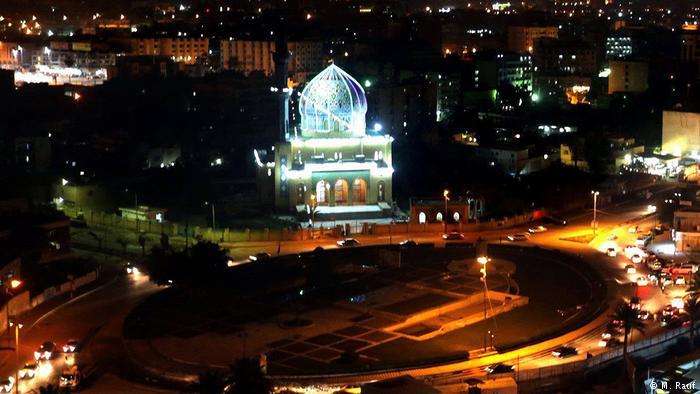
Firdos Square: in 2003, the statue of Saddam Hussein on Firdos Square was torn down to signal the end of his regime. Although many years have passed since then, it still looks neglected and unkempt. Instead of finding a new lease of life as an elegant municipal space, it has remained a square without its own identity in the shadow of the 17 Ramadan Mosque (see picture). A new statue was made to replace that of Saddam Hussein following its destruction, but this was also removed, leaving just a damaged plinth -
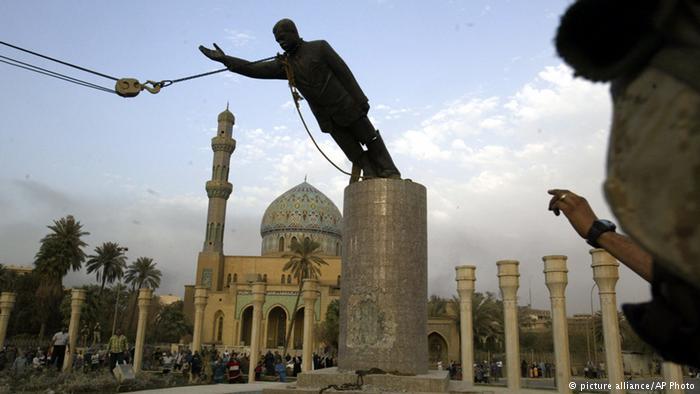
The end of the dictator ushers in change: the statue of Saddam Hussein was pulled down on the morning of 9 April 2003. Its destruction sealed the demise of a dictatorship that fought against all its neighbours and exposed the Iraqi people to a 13-year international blockade. This fateful turning point triggered a schism in Iraq, in the region and the entire world, the effects of which can still be felt to this day -
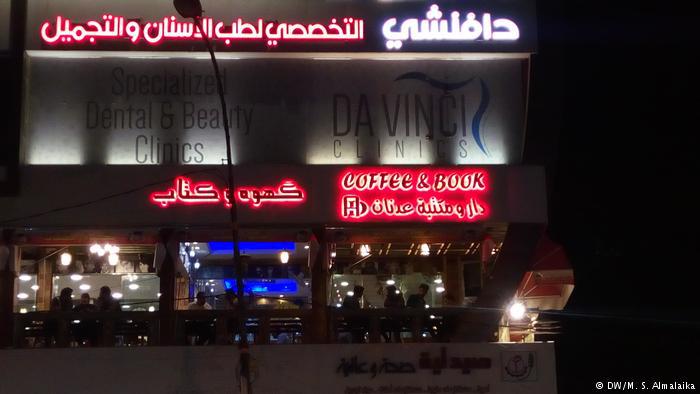
Freedom of speech and expression: as change has gathered pace over the years, Iraqis have become used to expressing their views freely. Today, they can air those opinions via a multitude of media channels in Iraq: on television, the Internet, in print media or on the radio. The picture shows the "Coffee and Book" cafe in the district of Karrada. Here, fans of literature and culture of both genders gather until the small hours to take some time out from the capital's woes -
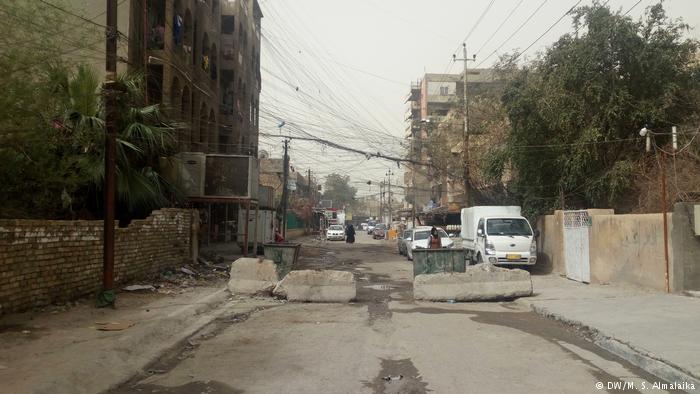
Poor security and no electricity: people have become accustomed to the poor security situation in the capital and its associated catastrophic consequences. More than half of the city's streets have concrete roadblocks. The picture shows a roadblock in the district of Karrada, which has experienced a renaissance as the cultural centre of Baghdad. The picture also shows cables from the alternative power grid. Many of the capital's streets are still not connected up to the national supply -
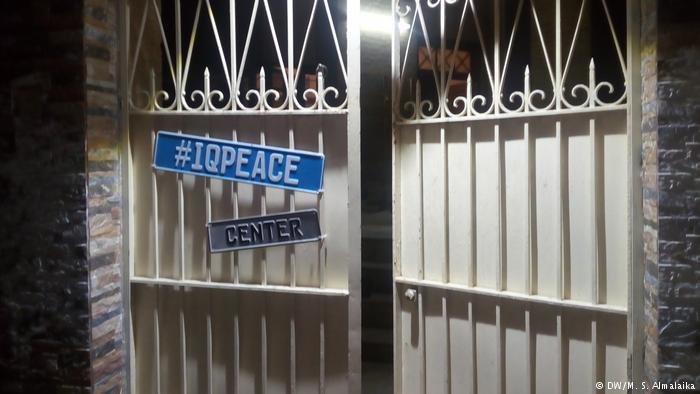
The Education for Peace in Iraq Centre: new non-government cultural initiatives spring up in Baghdad on an almost weekly basis. One of them is the "Education for Peace in Iraq Centre". It provides young people with a space to learn musical instruments or work in an otherwise creative way, as well as working to promote a culture of tolerance and altruism. The owner of the property supports the private initiative by renting it out to the project at a symbolic rate -

Solving the power crisis, Iraqi-style: Iraq is strewn with local power generators. Whenever the official supply fails, people are forced to switch to these generators, which means they need voltage regulators (see picture). These devices are part of the alternative supply network that Iraqis rely on due to a lack of public infrastructure. And although the government claims it has invested 30 billion dollars repairing the grid, there's no evidence of this to date -

Public transport is a rarity: the public bus network collapsed back in 2003; most of the bus depots and parking lots in the capital were looted. Later, the government relaunched the service with new buses. But it's limited to a very small area in the centre of Baghdad and people are frustrated by the tardiness and unpredictability of bus services in the city's clogged streets -
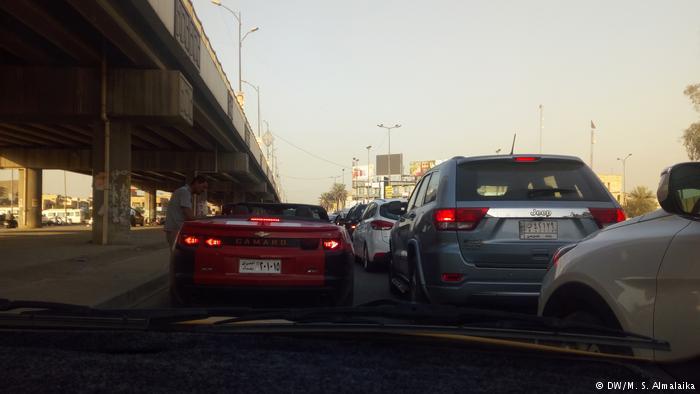
Snarled-up streets and luxury cars: the capital's roads are jammed up all day, every day, without exception – such as here on Al Mustansiriyya Square in Baghdad. People are fed up with the endless stream of cars and the virtually non-existent traffic regulations on the roads. To make matters worse, transport police are reluctant to take action against offenders. It's interesting to see the large numbers of luxury American and Japanese cars on the streets, one indicator of rising income levels -
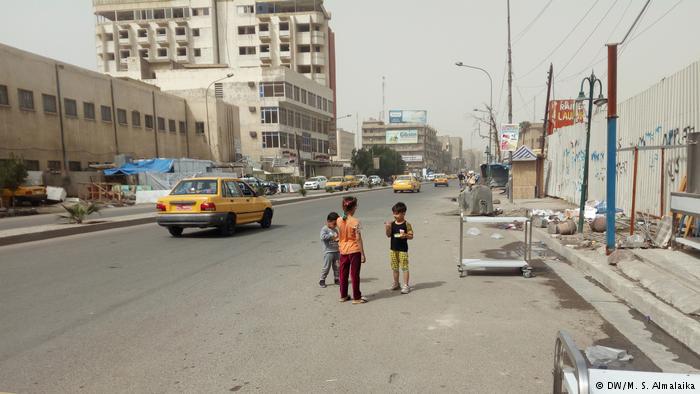
Children in the road, rubbish on the pavements: the pavements of Baghdad are not being used as they should be. For example, in some area of the city, people just dump their rubbish there with scant regard for anyone else. Here on Al Nidal Street in downtown Baghdad a large stall – modified to display the goods on sale – is blocking the path of pedestrians. The area behind the stall is used as a rubbish dump. A guard house occupies the rest of the pavement, forcing children and pedestrians into the road -

Abd al-Karim Qasim returns to defy his killers: no sooner had the Saddam Hussein regime been toppled, followers of the brigadier and former prime minister Abd al-Karim Qasim put up a statue of him in the Ras al-Qariya neighbourhood. An attempt on Qasimʹs life, in which Saddam Hussein was involved, was made here in 1959. The statesman, who came from a poor background, was finally executed by the first Baath government in 1963. Devotees organised the erection of the statue and the surrounding landscaping -
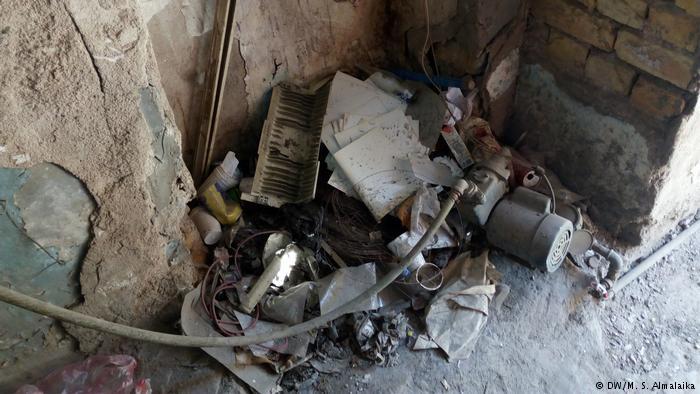
Water pumps in every house: low water pressure in the public supply means every house and building has an additional water pump, as here as the entrance to a building in Al Rasheed Street. Water from the public network usually arrives polluted and is not suitable for drinking. For this reason, Iraqis tend to drink bottled water. But because there are no official hygiene checks in the bottling plants, they also have limited faith in bottled water -

Illegal carwashes: carwashes like this one in Al Habibiyya, close to the local recreational area Al Jaish in Baghdad, have sprung up on the streets of the capital, as in most other parts of the country. The operators of these temporary carwashes tap into the public water supply and use high-pressure pumps to wash the cars with water from the pipes. Not only is this illegal business conducted under the nose of the authorities, most official taxi drivers get their cars washed in this way -
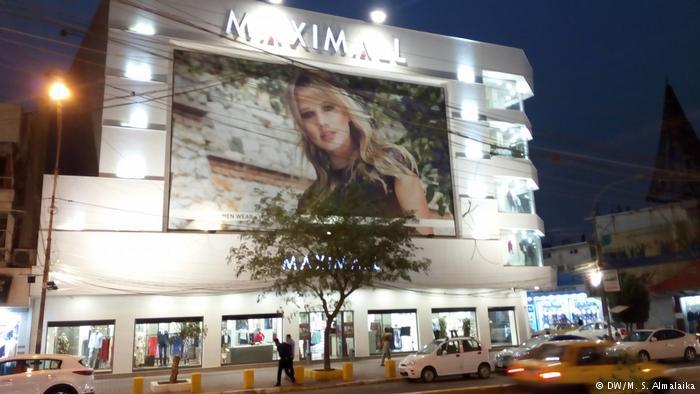
Shopping mall in Karrada: Iraqis became acquainted with the concept of shopping malls after 2003 and these have now become an important space for them to shop, dine and wile away a few enjoyable hours. Here, economic and social activities take place far away from authorities and the state. This wasn't possible under Saddam Hussein, as the government controlled the retail trade through a system of state wholesale stores, known as central markets -

Christians overshadowed by fear: the confessional, religious and ethnic rifts that have gripped and entrenched Iraq since the start of the post-Saddam era led to the migration of the majority of Iraqis, in particular smaller population groups, of which Christians make up the largest. The picture shows a Christian school with integrated kindergarten in the east of Karrada. The building is located opposite the St. Raphael Hospital (al-Rahibat), one of the few still visible symbols of Christianity in Baghdad -
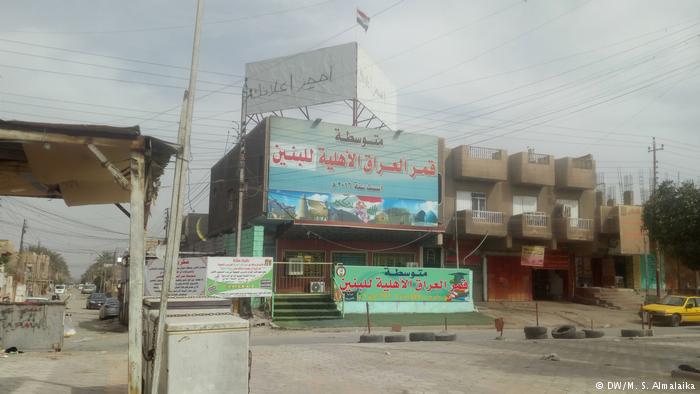
A rash of new private schools: poor teaching standards in public schools have resulted in the establishment of an increasing number of private ones, as here in the Baghdad district of Al Shaab. Iraqis deride public schools because they are not controlled by the state, but by the corruption that has taken root within the system. In their final year, students skip public school for three months and attend private schools instead. There, they are guaranteed an average grade that will get them a university plac -
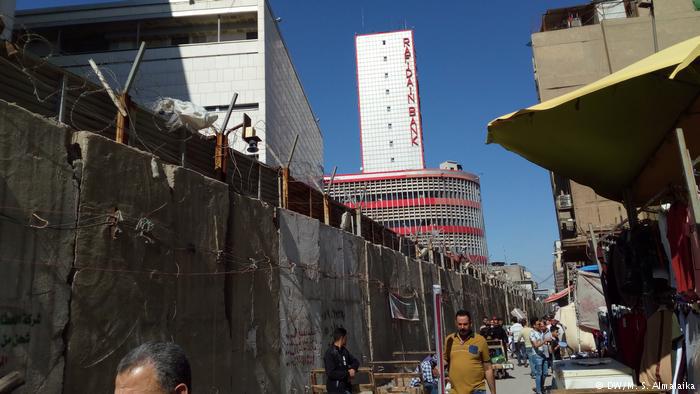
Walls to protect banks: in order to protect the banking complex on Al Rasheed Street in downtown Baghdad, the government erected walls reinforced with barbed wire and watchtowers. As well as Iraq's largest – the "Rafidain Bank" – the complex also includes the Central Bank of Iraq, already the target of several heists, where gold and foreign currency reserves are stored. The large wall cuts right through Al Rasheed Street and has turned it into a corridor for street vendors and porters' trollies
https://qantara.de./en/node/27420
Link
To all image galleries
